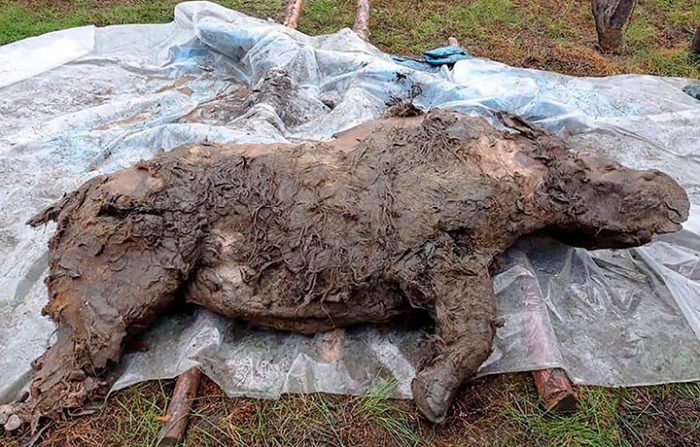For thousands of years, the Arctic tundra has acted as a deep freezer of Ice Age animal remains.
The soil there is permafrost—this means that it is frozen all year round. This state has kept the bodies of long dead creatures in remarkable condition. But it has also kept them hidden from our sight, buried deep under layers of frozen mud. Until recently that is.
As the Earth warms, much of this permafrost is melting for the first time in ages. And with this thaw is coming a parade of newly released animal remains, including dogs and cave bears. And now, a woolly rhinoceros!
Still furry after all these years
The juvenile woolly rhino was found in Yakutia, a republic in northeastern Russia. This part of the world is also known as Siberia. The remains are likely the most complete specimen of this species ever found.
The remains are about 80% intact and include fur and soft tissue (meaning skin, body organs, and more). This is very significant because normally soft tissue rots away quickly after death, leaving behind only bones. And this tissue contains vital genetic information that tells scientists a lot about how these animals lived.
It is estimated that this woolly rhino was about three or four years old when it died. Though many tests still need to be done, it probably lived between 20,000 to 50,000 years ago. That said, such tests will take time. That's because the remains are still stuck where they were found.
On the move... eventually
The Russian city of Yakutsk is home to the Mammoth Museum, where this woolly rhinoceros skeleton is on display. (Getty Embed)
The carcass is quite heavy, and was found in a remote part of the country that is difficult to get to. Winter is actually an easier time to get in and dig because that is when ice roads form over lakes and rivers. This is why, after being found in August, the woolly rhino remains are just being moved now.
Their first destination will be the Yakutian capital of Yakutsk. Then the rhino will make its way to Sweden where genetic researchers will work to try and understand why this ancient creature went extinct in the first place. We're so excited to see what they find out!
 The incredible remains of a woolly rhino that were found in northern Yakutia, Russia. (Valery Plotnikov/The Siberian Times)
The incredible remains of a woolly rhino that were found in northern Yakutia, Russia. (Valery Plotnikov/The Siberian Times)









